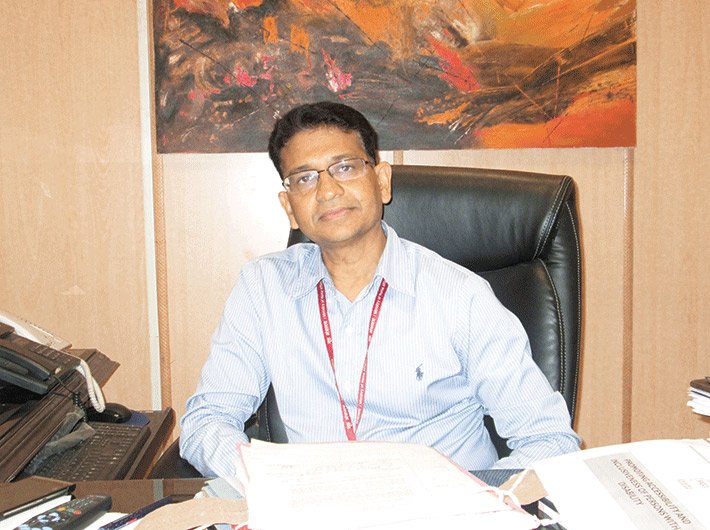Mobility is a precursor to everything and accessibility is a major challenge for persons with disabilities (PwD). To build an inclusive environment, the department of empowerment of persons with disabilities (DEPwD) under the ministry of social justice and empowerment has launched the Accessible India campaign. In conversation with Puja Bhattacharjee, DEPwD joint secretary Mukesh Jain explains how the campaign seeks to increase accessibility of the physical environment, enhance accessibility and usability of public transportation and information and communication services.
What prompted your department to launch the Accessible India campaign?
If we look through the eyes of a disabled person, much of the surroundings are inaccessible [to them]. Without proper provisions a PwD cannot access buildings, toilets, and public transport. Blind persons navigate with much difficulty in the absence of braille signs and tactile tiles. Though international airports have provisions for the disabled, domestic terminals are far behind. Railway stations are a major challenge. Even if disabled people manage to get into the train, they cannot access the toilet. People with hearing disability cannot keep a track on the announcements made for a change in train schedule or platform number. Buses in most cities are inaccessible for wheelchair-bound persons, and are not equipped with any special device or railings to facilitate their entry.
How will the campaign address these challenges?
The Accessible India campaign has three major components: accessibility of built environments (hospitals, schools, colleges, police stations, offices, etc.), transport environment, and information and communication services. All buildings need to have ramps to ensure an independent and dignified life for PwD. Corridors have to be wide enough to be accessible by wheelchair-bound persons. Lifts need to have floor numbers in braille and corridors need tactile tiles for blind persons. Captioning provision has to be made for the hearing impaired.
In phase one of the campaign we are targeting 48 cities which will be made disabled-friendly. We have asked the respective state governments of the selected cities to give us a list of 50-100 public buildings which when made disabled-friendly will have maximum impact on PwD. Once we get the list, we will conduct an access audit to find out the shortcomings. Based on the results, the buildings will be retrofitted. We will also be engaging with the railways and transport ministries to work out the finer details of accessibility. After buildings, we will focus on the roads.
Is it going to be an expensive process?
As per our estimation, finances for conducting access audit will not be much. Many NGOs have come forward to conduct pro bono access audits. We expect the concerned ministries of the state and central government to fund the retrofitting.
How can information and communication technology be made disabled-friendly?
Technology exists to convert the written text in websites into audio via a screen reader. Documents have to be uploaded in a format which can be read by a screen reader. Television is not only a source of education but also entertainment. PwD (blind, deaf persons) can be brought to the mainstream by making television accessible to them. For television, text to speech (TTS) translation is available technologically and in many countries it is built in set-top boxes. Since, a blind person watching a movie can only hear the sounds or dialogues, audio description software is available which describe the scenes where there is no speech or sound. Similarly, for deaf persons, dialogues/sounds can be made accessible via captions.
What are the challenges you face and how are you going to address them?
We cannot keep making inaccessible buildings and retrofitting them. Universal design approach must be followed to make buildings accessible to everyone. They have to be made part of building by-laws. It will take time to spread the concept. We are starting with public buildings for a demonstration effect. We cannot stop at 100 buildings. With this project we are creating awareness. We will use technological innovations to address the gaps in accessibility.
We have created a mobile app to crowdsource information on inaccessible places. People can register on the app, click a picture or shoot a video of an inaccessible place and upload it. The information will go to the concerned department (education if it is a college, health if it is a hospital) secretary and ask whether he/she will like to do something about the problem. The information will also come to my department. If the secretary is unable to take it up due to lack of funds, we will take it up under the Scheme for Implementation of Persons with Disabilities Act (SIPDA). We are also preparing an app to map all the accessible places on Google Maps in all Indian languages. The app will also incorporate rating on accessibility.
Public transport is a big challenge for PwD. How can you resolve this?
We, in consultation with IIT Delhi, have become partners for a device called On Board. Visually challenged people have a heightened sense of hearing. While waiting at a bus stand the device will beep the number of the approaching bus. Similarly, it will beam to the bus that a visually impaired person is about to board and a recorded voice will start speaking to guide the person to board the bus. The driver, the conductor and passengers will also be alerted. The equipment has already been tested in 1,000 buses in Mumbai.
How are you planning to engage and sensitise society about PwD?
We are trying to make an app called Be My Eyes, which will help a visually impaired person read with help from a friend. We have asked premier educational institutes like the IITs and IIMs to create Accessible India society linked to national service scheme (NSS).
On a larger scale, we will be conducting five workshops in metro cities. We will invite all stakeholders – government officials, NGOs, corporates and academicians and conduct training sessions. We will also train 200 sign language interpreters in the first phase by 2019. We want every aspect of life, be it health, education or corporate, to be accessible to PwD.
Will the campaign be incorporated in the flagship programmes of the government?
We are interacting with all the ministries. We have asked the ministry of urban development to integrate smart cities with Accessible India Campaign and the ministry of human resources and development to incorporate epub3 format in textbooks. We are also engaging with the ministry of tourism to not only make the tourist hotspots accessible to PwD but also the nearby hotels and restaurants. After cities we will concentrate on making rural and semi-urban infrastructure accessible to PwD.

